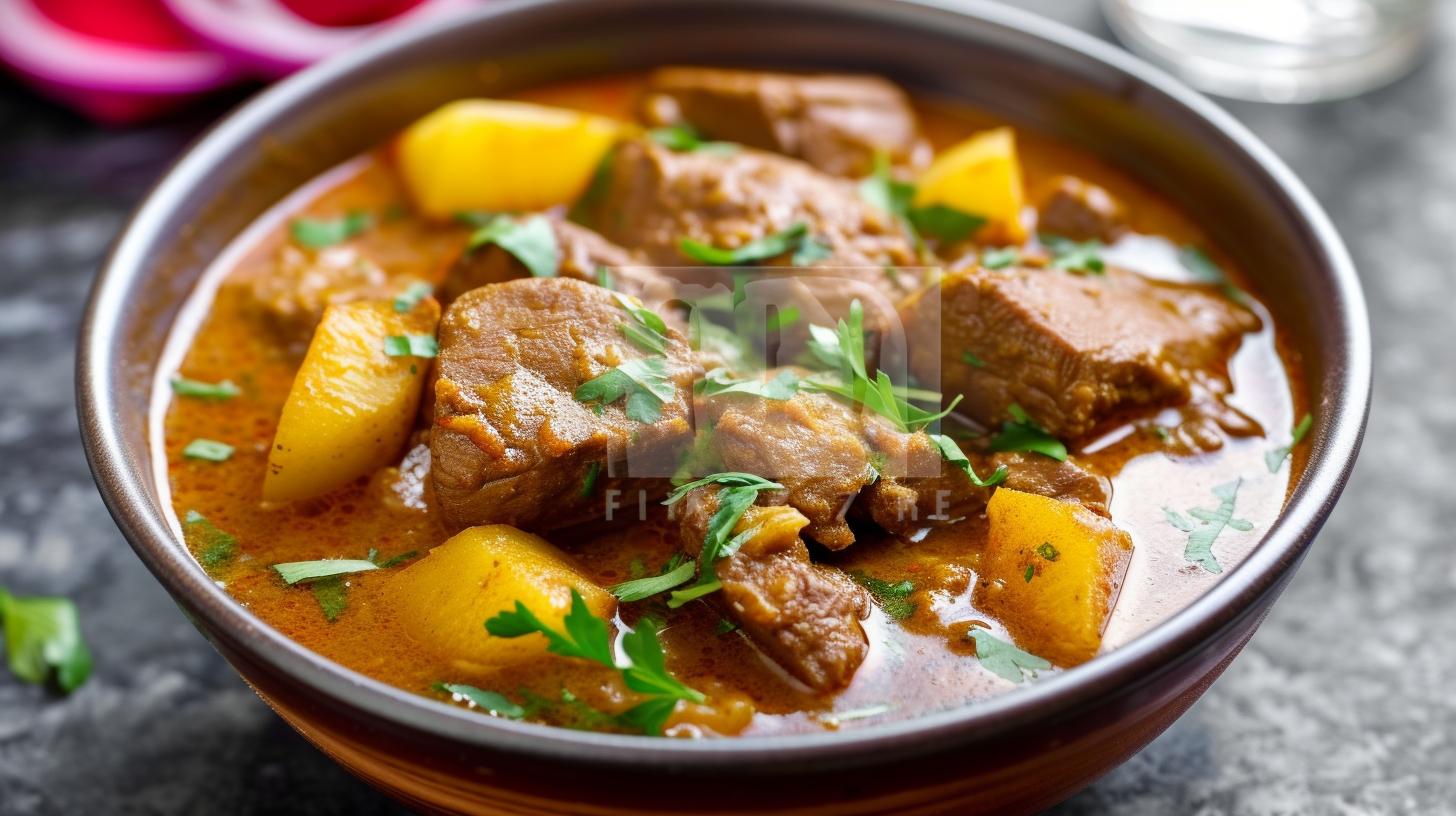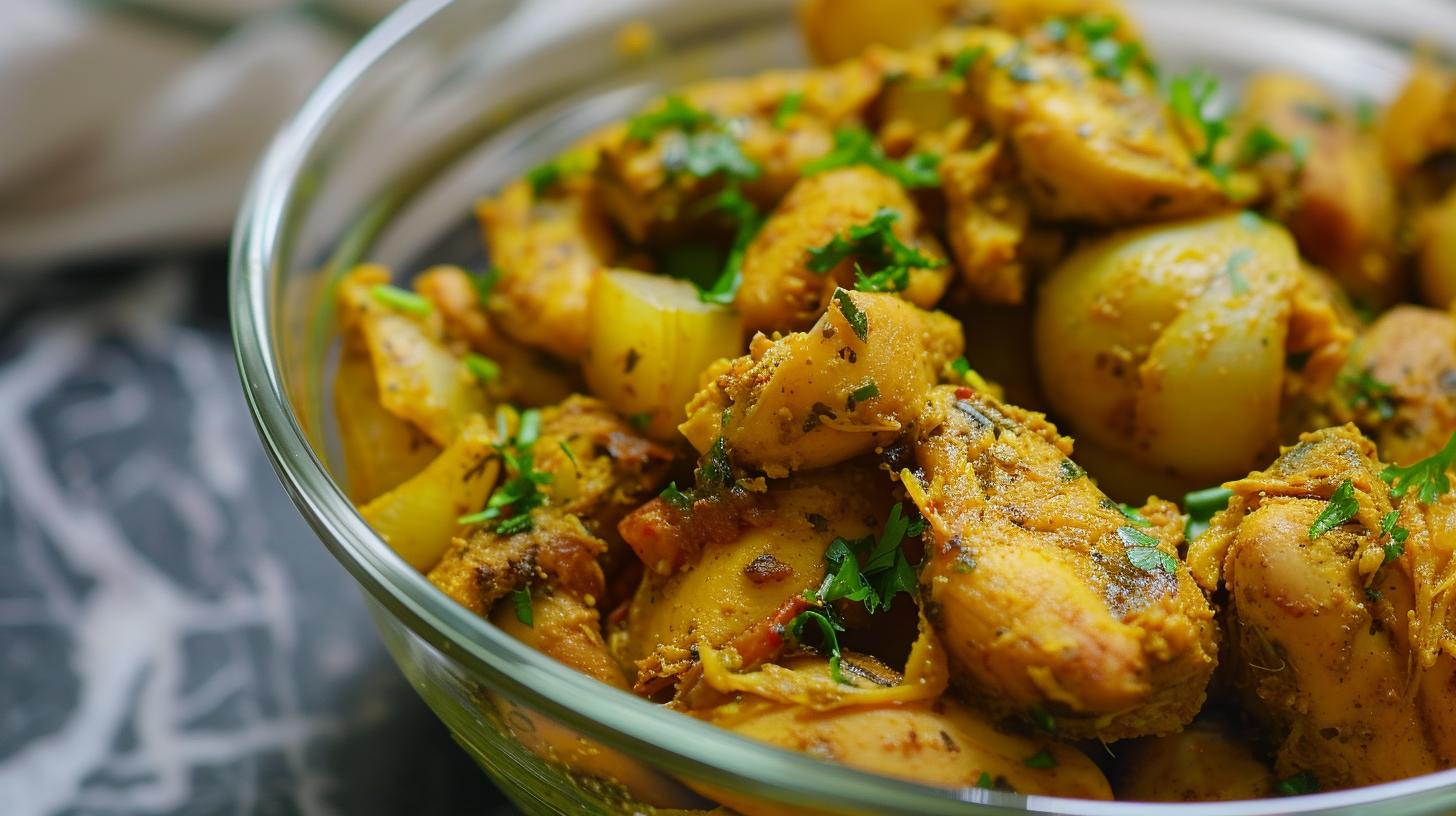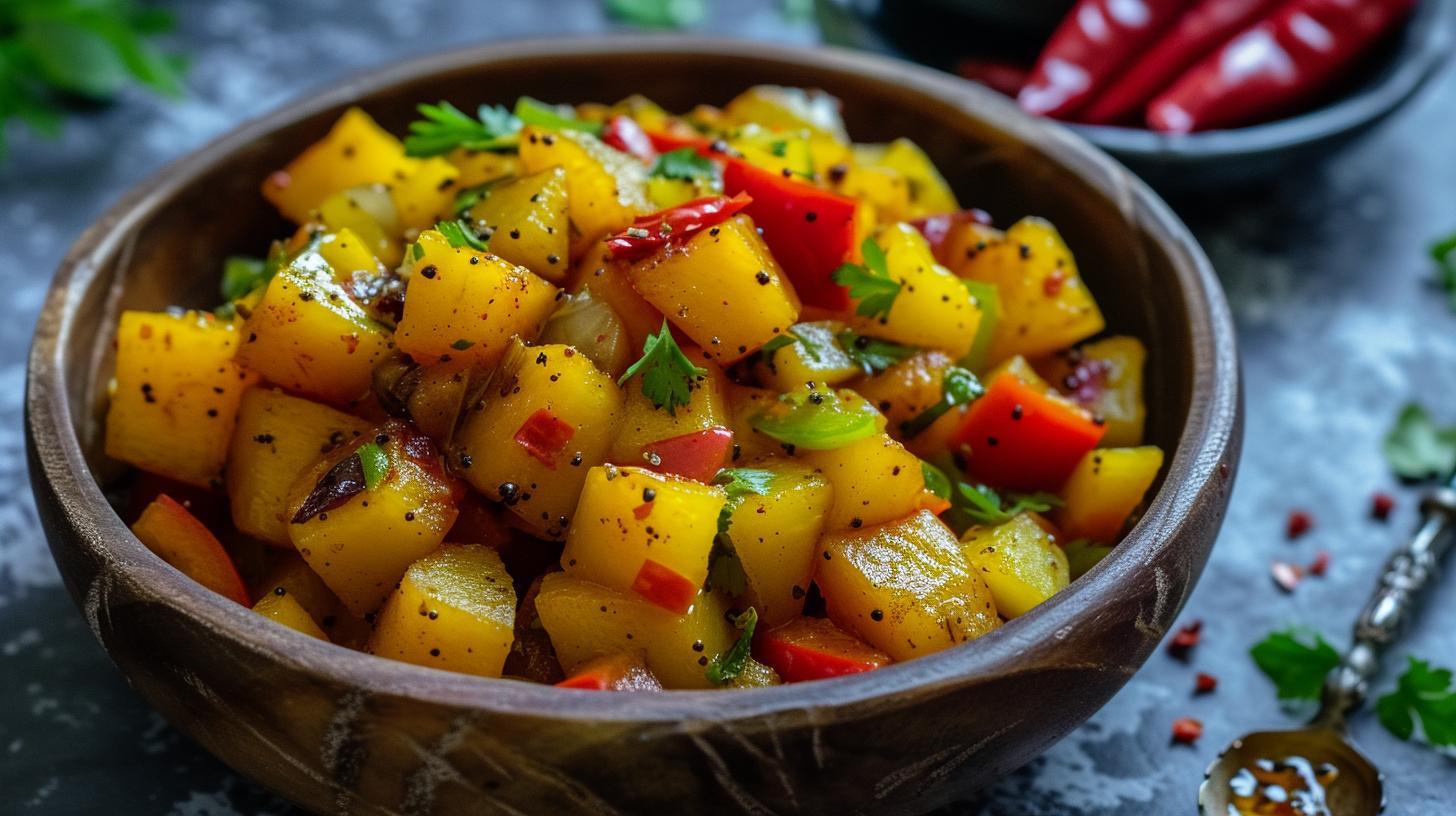Are you looking for a delicious and nutritious vegetarian dish to try? Look no further than the flavorful and versatile Kathal Ki Sabzi recipe in Hindi.
This traditional Indian recipe features jackfruit, known as “kathal” in Hindi, as the star ingredient. In this article, we will explore the health benefits of jackfruit, provide you with a step-by-step guide to preparing Kathal Ki Sabzi, share tips for choosing the best kathal for your recipe, and delve into the traditional spices and flavors used in this dish.
Jackfruit, or kathal, is not only a popular meat alternative for vegetarians, but it also offers an array of health benefits. It is a good source of fiber, vitamins, and minerals, making it a nutritious addition to any meal. We will discuss these health benefits in detail to highlight why incorporating kathal into your diet can be beneficial.
In our step-by-step guide, we will walk you through the process of preparing Kathal Ki Sabzi at home. From selecting ripe jackfruit to cooking it to perfection, you’ll learn all the essential tips and techniques for mastering this classic Indian dish. Additionally, we will provide insights on choosing the best kathal for your recipe and discuss the significance of using ripe jackfruit versus young green jackfruit.
To truly capture the authentic flavors of Kathal Ki Sabzi, it’s important to understand the traditional spices and flavors that are commonly used in its preparation. We will explore these key ingredients, allowing you to recreate an aromatic and savory dish that pays homage to India’s rich culinary heritage. Additionally, we will touch on variations of Kathal Ki Sabzi across different regions in India-showcasing the diversity within Indian cuisine.
Whether you’re new to cooking with jackfruit or a seasoned pro, our article will offer valuable tips and tricks for perfecting your Kathal Ki Sabzi. From enhancing its flavor profile to achieving optimal texture, our expert advice aims to elevate your culinary skills and ensure that your dish turns out impeccably every time. Whether you prefer a spicy or mild version of Kathal Ki Sabzi, we’ve got you covered with tailored recommendations.
As we delve deeper into this beloved Indian dish throughout the article sections that follow this introduction section,h2> be prepared to embark on a journey that celebrates the versatility and cultural significance of Kathal Ki Sabzi in Hindi cuisine.
The Health Benefits of Jackfruit (Kathal)
Jackfruit, also known as kathal in Hindi, is not only delicious but also packed with health benefits. This tropical fruit is rich in vitamins, minerals, and dietary fiber, making it a nutritious addition to your diet. Let’s explore the various health benefits of incorporating jackfruit into your meals.
One of the key health benefits of jackfruit is its high vitamin C content. This powerful antioxidant helps boost the immune system, promotes healthy skin, and aids in the absorption of iron. Additionally, jackfruit is a good source of vitamin A, which is essential for vision, immune function, and reproductive health.
In addition to being rich in vitamins, jackfruit is also packed with potassium and dietary fiber. Potassium plays a vital role in regulating blood pressure and supporting heart health. Meanwhile, the dietary fiber in jackfruit can aid in digestion, help maintain a healthy weight, and reduce the risk of certain diseases such as diabetes and heart disease.
Moreover, jackfruit contains antioxidants like flavonoids and phytonutrients that help fight free radicals in the body and reduce inflammation. These compounds have been linked to a lower risk of chronic diseases such as cancer and heart disease.
Furthermore, jackfruits are low in calories and have no cholesterol or unhealthy fats. This makes them a great option for those looking to manage their weight or improve their overall diet.
Overall, incorporating kathal into your meals not only adds a burst of flavor but also provides numerous health benefits that contribute to overall well-being.
| Health Benefit | Description |
|---|---|
| Vitamin C | Boosts immune system and promotes healthy skin |
| Potassium | Regulates blood pressure and supports heart health |
| Dietary Fiber | Aids in digestion and helps maintain a healthy weight |
| Antioxidants | Fights free radicals in the body and reduces inflammation |
Step-by-Step Guide to Preparing Kathal Ki Sabzi
Kathal ki sabzi, also known as jackfruit curry, is a popular vegetarian dish in Indian cuisine. It is a flavorful and nutritious dish that can be enjoyed with rice, roti, or naan. The dish is made using raw jackfruit, which has a meaty texture and absorbs the flavors of the spices used in the recipe.

To begin preparing kathal ki sabzi, you will need to select a firm and unripe jackfruit. The outer skin of the jackfruit should be green and firm to the touch. Once you have chosen the best jackfruit for your recipe, it’s time to prepare it for cooking.
The first step in preparing kathal ki sabzi is cutting and cleaning the raw jackfruit. This can be a labor-intensive process as the fruit contains sticky sap that can be messy to work with. It’s important to oil your hands and knife before cutting into the jackfruit to prevent the sap from sticking to everything.
After cutting and cleaning the jackfruit, it is then boiled until tender. This softens the texture of the jackfruit, making it easier to cook and absorb flavors. Once boiled, the jackfruit can be further prepared by sautéing it with onions, tomatoes, and a blend of spices such as cumin, turmeric, coriander, and garam masala.
The final step in preparing kathal ki sabzi involves simmering the cooked jackfruit with the spice mixture until it reaches a thick and flavorful consistency. The end result is a delicious and aromatic curry that can be enjoyed with steamed rice or freshly made roti.
Here are some of the most commonly used ingredients when making kathal ki sabzi:
- Raw Jackfruit (Kathal)
- Onions
- Tomatoes
- Ginger
- Garlic
- Green chilies
- Cumin seeds
- Turmeric
- Coriander powder
- Garam Masala
When preparing kathal ki sabzi at home for your family or guests, keep in mind that this dish is not only delicious but also packed with nutrients. Raw jackfruit is high in fiber, vitamin C, antioxidants, and other essential vitamins and minerals.
| Ingredients | Quantity |
|---|---|
| Raw Jackfruit (Kathal) | 500g |
| Onions | 2 medium-sized |
| Tomatoes | 2 large-sized |
| Ginger | 1-inch piece |
Choosing the Best Kathal for Your Recipe
When it comes to preparing Kathal Ki Sabzi, choosing the best jackfruit is essential to achieving the perfect dish. The right jackfruit will ensure that your sabzi is flavorful, tender, and delicious.
Selecting Ripe Jackfruit
When choosing a jackfruit for your recipe, look for one that is ripe but still firm. A ripe jackfruit will have a sweet aroma and its skin will be greenish-yellow in color. Avoid selecting a jackfruit with brown spots or soft spots as this may indicate overripeness or spoilage.
Freshness Matters
Freshness is key when it comes to selecting jackfruit for your sabzi. Look for a jackfruit that feels heavy for its size and has minimal bruising or blemishes on its surface. A fresh jackfruit will yield the best flavor and texture for your dish.
Inquire With Local Vendors
For the best results, consider speaking with local vendors at farmers’ markets or specialty grocery stores who can provide information on the freshness and quality of their jackfruit. They may also be able to recommend specific varieties of jackfruit that are well-suited for making Kathal Ki Sabzi.
Consider Frozen Options
If fresh jackfruit is not readily available in your area, frozen options can also be used for preparing Kathal Ki Sabzi. Frozen jackfruit is often picked and packaged at the peak of its ripeness, making it a convenient alternative that still yields delicious results.
Choosing the best kathal for your sabzi is crucial in ensuring an authentic and delectable dish. By paying attention to these tips for selecting the right jackfruit, you can elevate the flavors of your Kathal Ki Sabzi recipe while celebrating this beloved ingredient in Hindi cuisine.
Traditional Spices and Flavors Used in Kathal Ki Sabzi
When it comes to traditional Indian dishes, the use of spices and flavors is essential in creating authentic and delicious flavors. Kathal ki sabzi is no exception, as it relies on a unique blend of spices and seasonings to give it its distinct taste. In this section, we will explore the traditional spices and flavors used in preparing kathal ki sabzi.

Common Spices Used
One of the key elements in kathal ki sabzi is the use of common Indian spices such as cumin seeds, coriander powder, turmeric, red chili powder, garam masala, and asafoetida (hing). These spices not only add depth and complexity to the dish but also contribute to its vibrant color and rich aroma.
Flavorful Additions
In addition to the basic spices, kathal ki sabzi often includes flavorful additions such as ginger, garlic, onion, and tomatoes. These ingredients work together to create a robust base for the dish, infusing it with layers of savory, spicy, and tangy flavors.
Specialty Seasonings
Depending on regional preferences, some variations of kathal ki sabzi may include specialty seasonings like amchur (dry mango powder), fennel seeds, nigella seeds (kalonji), or poppy seeds. These unique seasonings can elevate the dish with their distinctive tastes and aromas.
Balance of Flavors
The art of cooking kathal ki sabzi lies in achieving a harmonious balance of flavors. The combination of warm spices, pungent aromatics, and tangy elements must come together seamlessly to create a well-rounded taste profile that tantalizes the palate.
Enhancing the Natural Flavor of Kathal
While kathal ki sabzi is undeniably flavorful thanks to its spice blend, it’s important to also appreciate the natural flavor of jackfruit itself. With its subtly sweet undertones and meaty texture, jackfruit provides a delicious canvas for showcasing these traditional spices and flavors.
As you embark on your culinary journey to prepare kathal ki sabzi at home using this Kathal Ki Sabzi Recipe in Hindi,you’ll find that mastering these traditional spices and flavors will be key to creating an authentic and memorable dining experience for yourself and your loved ones.
Variations of Kathal Ki Sabzi Across Different Regions in India
Kathal ki sabzi, also known as jackfruit curry, is a popular vegetarian dish in India that varies widely from region to region. The diverse culinary traditions of the different states in India have resulted in unique variations of this flavorful and aromatic dish. Whether it’s the use of traditional spices or cooking techniques, every region puts its own spin on Kathal ki sabzi, making it a versatile and beloved dish across the country.
Let’s take a closer look at the variations of Kathal ki sabzi across different regions in India:
1. North India: In the northern states such as Punjab and Uttar Pradesh, Kathal ki sabzi is often prepared with a rich and creamy gravy made from yogurt and ground cashews or almonds. This gives the dish a luscious texture and a hint of nuttiness that pairs perfectly with the tender jackfruit pieces.
2. South India: In contrast, in states like Kerala and Tamil Nadu, Kathal ki sabzi is prepared using coconut milk as a base for the gravy. This imparts a mild sweetness to the dish while enhancing its creaminess. Additionally, the use of curry leaves and mustard seeds adds a distinct South Indian flavor to the dish.
3. East India: In Bengal and Odisha, Kathal ki sabzi is usually cooked with fragrant spices such as cumin, mustard seeds, and panch phoron (a blend of five whole spices). The addition of tomatoes or tamarind provides a tangy twist to the dish, making it a favorite among locals.
4. West India: In Maharashtra and Gujarat, Kathal ki sabzi is often prepared using Goda masala, a unique spice blend specific to these regions. The addition of jaggery (unrefined sugar) balances out the flavors by adding a subtle sweetness to the savory curry.
5. Central India: In Madhya Pradesh and Chhattisgarh, Kathal ki sabzi may be cooked with an assortment of locally available spices such as tejpatta (Indian bay leaf) and kasuri methi (dried fenugreek leaves). The combination of these indigenous spices lends an earthy aroma to the dish.
Each variation captures the essence of its respective region’s culinary heritage while showcasing the adaptability of jackfruit as an ingredient in Indian cuisine.
Tips and Tricks for Perfecting Your Kathal Ki Sabzi
When preparing Kathal Ki Sabzi, there are a few tips and tricks that can help you elevate the dish to its full potential. Here are some pointers to ensure that your Kathal Ki Sabzi turns out perfectly every time:
1. Use Ripe Jackfruit: When choosing jackfruit for your recipe, make sure to select ripe jackfruit that is sweet and fragrant. Unripe jackfruit tends to be more suitable for savory dishes due to its neutral flavor.
2. Properly Cook the Jackfruit: It’s important to cook the jackfruit thoroughly before adding it to the sabzi. This will ensure that it has a tender texture and absorbs the flavors of the spices and seasonings.

3. Toast the Spices: Before adding the spices to your Kathal Ki Sabzi, consider dry-toasting them in a pan for a few minutes. This will enhance their aroma and flavor, giving your dish an extra depth of taste.
4. Balance the Flavors: Pay attention to achieving a balance of flavors in your Kathal Ki Sabzi. The sweetness of the jackfruit should be complemented by the warmth of the spices, tanginess of tomatoes, and subtle heat from chilies.
5. Garnish with Fresh Herbs: Just before serving, garnish your Kathal Ki Sabzi with fresh cilantro or mint leaves for a burst of freshness and color.
By following these tips and tricks, you can ensure that your Kathal Ki Sabzi is bursting with flavor and perfectly cooked every time you make it.
Overall, mastering the art of cooking Kathal Ki Sabzi takes practice, but with these tips in mind, you’ll be well on your way to creating a delicious and authentic North Indian dish at home.
Remember that practice makes perfect – so don’t be discouraged if your first attempt doesn’t turn out exactly as expected. Keep experimenting with variations on this classic recipe until you find just the right blend of spices and flavors that suits your personal tastes.
Serving Suggestions and Pairings for Kathal Ki Sabzi
Kathal ki sabzi is a delicious and versatile dish that can be paired with a variety of other foods to create a complete and satisfying meal. In this section, we will explore some serving suggestions and pairings that will complement the rich flavors of kathal ki sabzi.
One classic pairing for kathal ki sabzi is steamed rice or jeera rice. The mild flavor and fluffy texture of the rice make it the perfect accompaniment to the spicy and flavorful jackfruit curry. The combination of kathal ki sabzi and rice creates a well-balanced meal that is both filling and comforting.
For those looking for a healthier option, kathal ki sabzi can also be served with whole wheat roti or naan. The nutty and slightly chewy texture of whole wheat bread complements the tender jackfruit in the curry, creating a satisfying and wholesome meal.
Another popular pairing for kathal ki sabzi is raita, a traditional Indian yogurt-based side dish. The cool and creamy raita helps to balance out the heat of the spices in the jackfruit curry, creating a harmonious contrast of flavors. Additionally, the refreshing nature of raita makes it a great palate cleanser between bites of the savory kathal ki sabzi.
If you’re looking to add some crunch to your meal, consider serving kathal ki sabzi with crispy papad or pickles. The crunchy texture of papad or the tangy flavor of pickles provides an interesting contrast to the soft and aromatic jackfruit curry, adding depth to each bite.
Conclusion
In conclusion, Kathal Ki Sabzi is a beloved and versatile dish in Hindi cuisine that offers a wide array of health benefits, traditional flavors, and regional variations. Its main ingredient, jackfruit (kathal), is not only delicious but also packed with nutrients that contribute to overall well-being.
From its high levels of antioxidants and fiber to its ability to improve digestion and strengthen the immune system, kathal is truly a superfood that deserves more attention. By incorporating this fruit into our diet through dishes like Kathal Ki Sabzi, we can enjoy its numerous health benefits while savoring its delicious taste.
The step-by-step guide provided in this article gives an easy-to-follow recipe for preparing Kathal Ki Sabzi at home. Whether it’s choosing the best kathal or mastering the traditional spices and flavors, these tips will help anyone create a flavorful and authentic dish. Additionally, the variations of Kathal Ki Sabzi across different regions in India showcase the diversity of Indian cuisine and provide inspiration for trying new flavors and cooking techniques.
For those looking to perfect their Kathal Ki Sabzi, the tips and tricks mentioned here offer valuable insights into achieving the best results. From marinating the kathal properly to experimenting with different cooking methods, these suggestions can help enhance the overall flavor and texture of the dish.
Finally, serving suggestions and pairings for Kathal Ki Sabzi encourage individuals to get creative with their culinary creations. Whether it’s pairing it with rice, roti, or other traditional Indian dishes, there are many ways to enjoy this flavorful sabzi.
In essence, Kathal Ki Sabzi is a versatile and delicious dish that captures the essence of Hindi cuisine. Its rich history, health benefits, diverse flavors, and culinary potential make it a must-try for anyone interested in exploring the vibrant world of Indian cooking. Whether following a kathal ki sabzi recipe in hindi tradition or putting your own spin on it, this dish has something special to offer for everyone.

